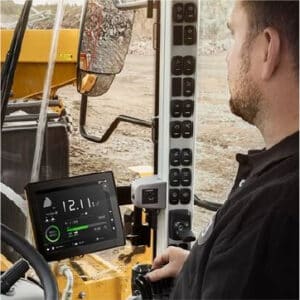
How to Improve Wheel Loader Productivity
Whether you’re handling construction, road building, utility work, material handling, or even snow removal, your wheel loaders play a critical role in completing the job successfully. The key to optimizing productivity ultimately depends on your operator’s skills and the features of your particular machine. To help you maximize performance and avoid wasted time and resources, we’ve gathered some important tips and best practices for your wheel loader operator and for choosing the right machine for the job.
Use the right loading pattern
Critical for improving the productivity of your wheel loaders when moving large volumes of material is to minimize the distance you need to travel and the number of turns and maneuvers you have to make. One of the most effective ways to load dump trucks or hoppers is called the Y or V pattern. It works by positioning your truck or hopper with the rear of the vehicle just off the edge of the pile. Your wheel loader operator starts at about a 45 degree angle in relation to the dirt pile and the truck. They then pull forward, curving to the right, toward the pile to fill the bucket, reverse back to the 45 degree angle starting position, and then pull forward curving to the left to dump into the truck, before reversing back to the 45 degree angle to begin the cycle again. The path that the wheel loader operator takes during the full cycle looks like a Y or a V, which is where the pattern gets its name.
The important thing is to keep your dump trucks in a consistent position, so the Y cycle isn’t too big or too small. You need enough space to maneuver the loader effectively, but not so much space that it is traveling more distance than necessary, wasting fuel and time.
Choose advanced wheel loader features
In addition to the routes your wheel loader operator takes and which loading pattern they use, the next most important factor for improving productivity is using a machine with the latest features. Modern loaders are often equipped with systems that save you time and increase your accuracy.
For example, with Volvo wheel loaders you can use Load Assist, an umbrella name for features that provide real time guidance on idling, braking, throttling, and more, as well as load weight information, and productivity data. Armed with this information, a wheel loader operator can instantly recognize if there are any issues with how they are operating the machine and where improvements can be made.
Other productivity and efficiency increasing features that are available on many machines include:
- Boom kickout stops the boom at a set height when lifting and is helpful if you are consistently loading a truck at the same height for an extended period of time.
- Return to dig stops the boom at a predetermined point when lowering, so the bucket begins in the same position with each cycle.
- Auto leveling automatically returns the wheel loader bucket from a dump or dig to a carrying position.
Determine the right bucket for your needs
If you’re primarily loading materials into trucks, then a high capacity wheel loader bucket with a smooth profile, large opening angle, and straight cutting edge is typically the right choice. On the other hand, if you’re mainly digging out dirt, rocks, or other material, then choosing a bucket with greater breakout force and high penetration teeth will be best. You can also choose a heavy duty bucket for loading tough, abrasive objects, a light material bucket for lower density material like snow or mulch, or a rock bucket for loading high density rocks or concrete.
Using the wrong type of bucket can hinder machine performance, reduce productivity, and even damage your equipment.
Match bucket size to machine power
A larger wheel loader bucket does not always mean higher production. When determining how big the bucket should be, you need to first consider the size and power of your wheel loaders and the size of your trucks and hoppers. Using a bucket that pushes your machine over the recommended limit will increase wear, reduce the lifespan of components, and lead to expensive, unexpected downtime.
- Consult your owner’s manual for bucket size information and maximum tipping load
- Understand the size of your truck or hopper and determine how many loads you need to move each day
- Opt for a bucket that moves the required amount of material but that doesn’t overload your machine
Minimize ground contact when loading
Your wheel loader operator should not let the cutting edge of the bucket touch the ground more than 6” to 12” inches before the face of the material. Avoiding excessive ground contact reduces bucket wear and material contamination. It also lowers fuel consumption since there is no unnecessary friction between bucket and ground. To get a full bucket on every cycle and maximize productivity, your wheel loader operator should keep the cutting edge parallel to the ground and just before curling the bucket, they should raise it a little. Doing so avoids unnecessary bucket material contact, prolonging bucket life and saving fuel due to less friction.
If you have any questions about how your wheel loader operator can increase their productivity or about wheel loaders in general, contact our team.









